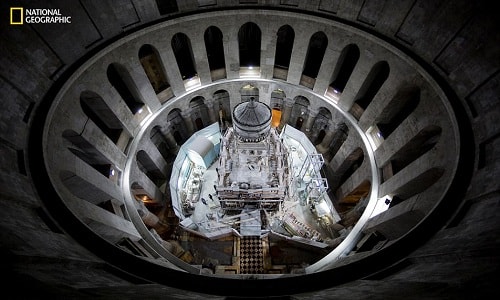Jesus' tomb is in danger of collapsing
The shrine covering the tomb of Jesus is at serious risk of collapse due to unstable foundations.
 |
| Jesus' tomb was prone to collapse due to its unstable foundation. Photo: National Geographic. |
Scientists have discovered that the area of Jesus' tomb inside the Holy Sepulchre in Jerusalem is at high risk of collapse, International Business Times reports. "When it collapses, the destruction will not be gradual but catastrophic," said Antonia Moropoulou of the National Technical University of Athens, who is leading the excavations.
The area was restored in 2016 and the tomb was first opened in October last year. The team of experts said further restoration was needed to prevent the structure from collapsing.
Surprising discovery inside Jesus' tomb
The reason the tomb of Jesus Christ is so vulnerable to collapse is because the tomb and the surrounding shrine were built on shaky foundations made from the rubble of temples and other structures destroyed over the centuries in the area. Each pillar supporting the shrine weighs about 22 tons.
About 2,000 years ago, the area was an old limestone quarry. A Roman temple was built in the 2nd century and later destroyed by order of Emperor Constantine. Constantine's new building was also partially destroyed and then restored in the 16th and 19th centuries.
As a result, the tomb now rests on a layer of shaky soil that has been piled up from the remains of several demolished structures. Ground-penetrating radar and robotic camera analysis indicate the fragility of the rubble layer beneath the tomb. The ancient limestone quarry also has steep, gentle sides, which form part of the foundation of the present-day structure.
Sewer pipes beneath the shrine room caused the foundation to become damp, leading to cracks. A network of tunnels of unknown origin also ran directly under the tomb.
Scientists restoring the Edicule, the tomb’s protective covering, said the area beneath the tomb would likely be opened up to remove and replace the rubble, a process that would take 10 months and cost about $6.5 million.
According to VNE
| RELATED NEWS |
|---|

